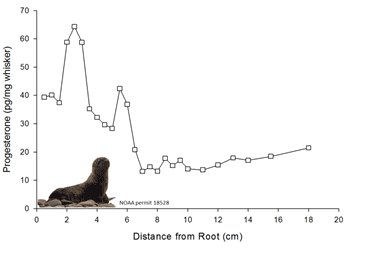Steller Sea Lion Research
Reproduction
Recent studies have found variable population trajectories of Steller sea lions spanning from the central Aleutian Islands west through the Russian Far East. Altukhov et al. (2015) suggested the varying population trends may be driven by lower birth rates on some rookeries. In addition, it was suggested that a higher pup survival rate may be linked to reduced reproductive rates of females. While these findings may seem contradictory, the overall decline on these rookeries could be driven by female Steller sea lions skipping a year or more between pregnancies resulting in fewer pups. The reduced pup production per female would allow increased investment in pups that are produced, ultimately leading to higher pup survival. However, pregnancy and birth rates for the region and in particular the central and western Aleutian Islands are not known. This data gap highlights the logistical challenges researchers and managers face in acquiring the data needed to properly target management actions. With this in mind, we validated the use of whiskers to track reproductive histories in Steller sea lions and northern fur seals.

Whiskers collected from females with known reproductive histories were used to compare hormone concentrations during reproductive events including full-term pregnancy and estrous without pregnancy. Whiskers showed cyclical patterns in progesterone concentrations along the length of the whisker which appears to signify previous pregnancies or luteal phases (after ovulation). These results indicate pinniped whiskers retain reproductive hormones, progesterone and 17β-estradiol (an estrogen), throughout the length of the whisker and possibly give insights into multi-year reproductive histories of Steller sea lions and northern fur seals.
